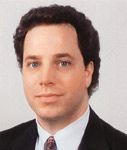Article
Study compares LASIK techniques
Myopic LASIK using a 400-Hz excimer laser is safe, effective, and predictable whether done with a wavefront-guided or wavefront-optimized technique.

However, after 3 months of follow-up, there are some differences between treatment groups in a variety of outcomes, and they all favor the WFG procedure, said Edward E. Manche, MD. director, cornea and refractive surgery, and professor of ophthalmology, Stanford University School of Medicine, Stanford, CA.
Dr. Manche presented findings from the study, which included 72 eyes of 36 patients. All LASIK flaps were created with the latest generation of the IntraLase femtosecond laser (iFS 150 kHz, Abbott Medical Optics) with a programmed flap depth of 105 æm, flap diameter of 9 mm, and a superior hinge.
Follow-up is continuing, but at 3 months, safety was excellent overall with no eyes losing more than 1 line of best spectacle-corrected visual acuity (BSCVA), and there were no significant differences between groups in quality of vision analyzed using 5% and 25% contrast BSCVA as a metric. However, there were significant differences favoring the WFG group over eyes having the WFO procedure in analyses of predictability, uncorrected visual acuity (UCVA), and higher-order aberration (HOA) induction.
"We also asked patients if they preferred vision in one eye or the other," he said. "Just over half the patients indicated a preference at 1 month and the proportion increased to 70% at 3 months, but at both visits, the majority of patients with a preference favored the WFG eye.
"What made these results particularly interesting was that for many of the patients who had a preference, UCVA was similar in their two eyes," Dr. Manche said.
The patients had a mean age of 36 years, and there were about twice as many females as males. The two treatment groups were closely matched in their preoperative characteristics. Mean manifest spherical equivalent (SEQ) was about –4 D in both groups and they each had about +0.5 D of cylinder.
All patients but one were seen after 1 month, and at that visit, the WFG procedure was slightly more effective than the WFO technique in reducing manifest SEQ, while there was a greater reduction in mean manifest cylinder in the WFO group.
However, the differences between groups narrowed at 3 months after surgery, based on data from 19 patients.
Newsletter
Don’t miss out—get Ophthalmology Times updates on the latest clinical advancements and expert interviews, straight to your inbox.





